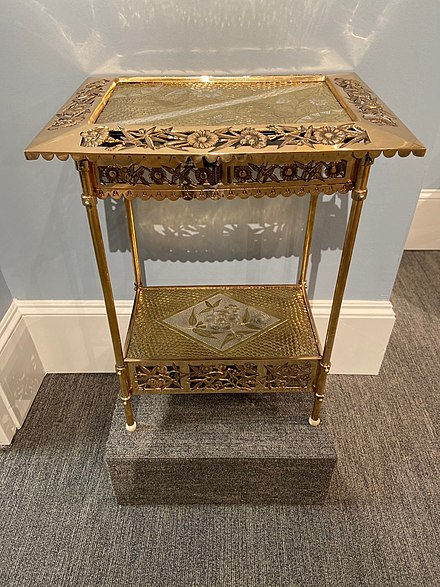15. Artistic research 1 (2)
- s2260715
- 2022年4月26日
- 讀畢需時 3 分鐘
We are living in an era where people have excess choices. What is the relationship between "people" and "objects"? How we choose, and how we perceive our current life is a very important thing.
I often feel that I am always torn between "Essentialism" and "Aestheticism" when designing. After a long period of study and research, I feel that graphic design can easily become a work that focuses on "appearance" and "shell", producing extreme visual results. I have been trying to fight and resist with this tendency in different ways and in different projects, but in some projects "appearance" has become the fulcrum of concept expression.
Therefore, I hope to think about the future design method by observing the relationship between "objects" and "people", and design projects in a truly necessary design form.
Aestheticism


The artists and writers of Aesthetic style tended to profess that the Arts should provide refined sensuous pleasure, rather than convey moral or sentimental messages. As a consequence, they did not accept John Ruskin, Matthew Arnold, and George MacDonald's conception of art as something moral or useful, "Art for truth's sake". Instead, they believed that Art did not have any didactic purpose; it only needed to be beautiful. The Aesthetes developed a cult of beauty, which they considered the basic factor of art. Life should copy Art, they asserted. They considered nature as crude and lacking in design when compared to art. The main characteristics of the style were: suggestion rather than statement, sensuality, great use of symbols, and synaesthetic/Ideasthetic effects—that is, correspondence between words, colours and music. Music was used to establish mood.

Caricature of Oscar Wilde as Narcissus featuring the key Aesthetic motif of the sunflower; the artist accuses Aesthetes of vanity and egotism.

Walter Pater’s Conclusion to Studies in the History of the Renaissance (1873) heavily influenced Aestheticism. Note his reference to ‘art for art’s sake’ in the last line.
Aesthetic decorative arts

According to Christopher Dresser, the primary element of decorative art is utility. The maxim "art for art's sake," identifying art or beauty as the primary element in other branches of the Aesthetic Movement, especially fine art, cannot apply in this context. That is, decorative art must first have utility, but may also be beautiful. However, according to Michael Shindler, the decorative art branch of the Aesthetic Movement, was less the utilitarian cousin of Aestheticism's main 'pure' branch, and more the very means by which aesthetes exercised their fundamental design strategy. Like contemporary art, Shindler writes that aestheticism was born of "the conundrum of constituting one’s life in relation to an exterior work" and that it "attempted to overcome" this problem "by subsuming artists within their work in the hope of yielding—more than mere objects—lives which could be living artworks." Thus, "beautiful things became the sensuous set pieces of a drama in which artists were not like their forebears a sort of crew of anonymous stagehands, but stars. Consequently, aesthetes made idols of portraits, prayers of poems, altars of writing desks, chapels of dining rooms, and fallen angels of their fellow men."
Government Schools of Design were founded from 1837 onwards in order to improve the design of British goods. Following the Great Exhibition of 1851 efforts were intensified and oriental objects were purchased for the schools teaching collections. Owen Jones, architect and orientalist, was requested to set out key principles of design and these became not only the basis of the schools teaching but also the propositions which preface The Grammar of Ornament (1856), which is still regarded as the finest systematic study or practical sourcebook of historic world ornament.
Production of Aesthetic style furniture was limited to approximately the late 19th century.[citation needed] Aesthetic style furniture is characterized by several common themes:
•Ebonized wood with gilt highlights.
•Far Eastern influence.
•Prominent use of nature, especially flowers, birds, ginkgo leaves, and peacock feathers.
•Blue and white on porcelain and other fine china.

Aesthetic Movement antiques at Florian Papp, New York City

Oscar Wilde lectured on the "English Renaissance in Art" during his North America tour in 1882



Comments